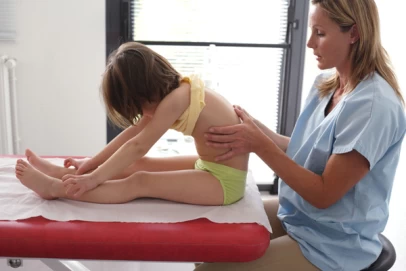Raising awareness of scoliosis among children's nurses

Update your knowledge and skills in caring for children with scoliosis. This module emphasises that early identification of scoliosis is vital to maximise treatment, support the child and family, and optimise health.
Search:
This module aims to raise awareness of scoliosis, outline how the condition can be diagnosed, identify which children are most likely to be affected, and explain what to do if a child has the condition. The primary concerns after identification of scoliosis are to establish whether it is likely to progress, causing further distortion in the normal curvature of the spine, and whether there is an underlying cause. Don't forget that you do not have to complete our two-hour learning modules all in one go. Tailor your learning to fit into your busy schedule by undertaking one or two sections at a time. You can stop and save your learning at any point and pick up where you left off when you return. Learning aims and intended outcomes Describe the different types of scoliosis, causes, prevalence and likely progression Discuss how scoliosis can be identified and outline available treatments Understand the effect scoliosis can have on children and their families Consider other conditions that can be mistaken for scoliosis Appropriately refer children with scoliosis to other healthcare professionals Disclaimer Please note that information provided by RCNi Learning is not sufficient to ensure competence in the skill. Assessment of competence should take place in line with local practice. Practice should always align with local protocols and procedures, latest guidelines and any regulatory code. All modules should currently be viewed together with available national and local Covid-19 guidelines. For advice, go to www.rcn.org.uk/covid-19
Resource last reviewed
3 Apr 2023
